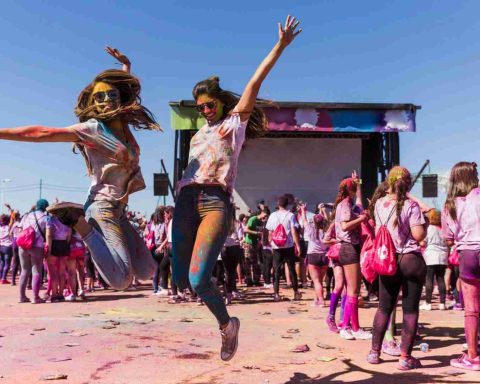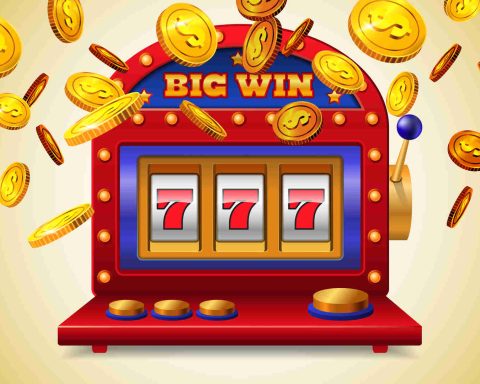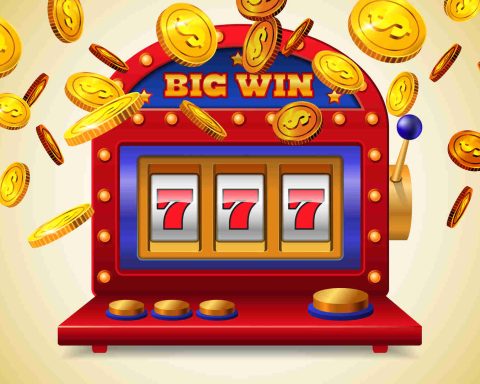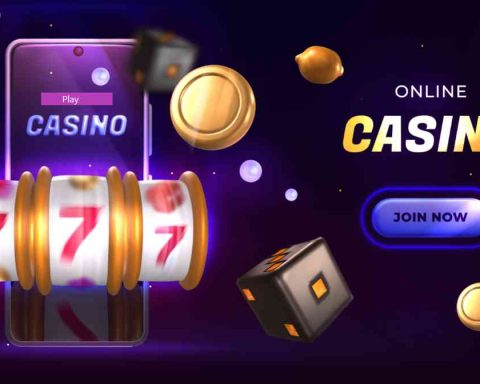As the U.S. leg of the Eras Tour hits the history books after a SoFi Stadium finale, comparisons to even the greatest pop tours of the past are hard to come by — this one sits in its own league, business-wise and culturally.
What, in pop music history, is anyone to compare Taylor Swift’s Eras Tour to? If you’re at all flummoxed by that question, join the club, populated by scores of journalists and commentators who’ve tried and failed to find reasonable parallels. “I promise that you’ll never find another like me,” Swift sang a few years ago, and although she meant that as a sing-along, not a superstar’s statement of purpose, truer words really never were spoken
On a pure business level, everyone can agree that it’s unprecedented. Pollstar reported recently that, by estimates, the Eras Tour will be the first tour to cross the billion-dollar mark in grosses (Elton John’s multi-year farewell tour holds the current record, with $939 million), and that this $1B milestone will likely be reached some time in March, when she is over in Asia. Mind you, if this projection proves true, she’ll have achieved it seven months before the tour actually ends in Toronto in November of 2024, if that Canadian stop does even represent the actual wrap-up of her time on the road. No one needs to waste a moment wondering if anyone has ever matched her commercial draw, then. When was the last time an artist sold out six nights at a stadium in Los Angeles, with such a demand for resale tickets that she easily could have booked six more, still without sating demand? The world hasn’t seen that, and won’t, again, in any foreseeable future.
Cutural impact is a little harder to make specific superlative claims for. Even without wanting to be mean about it, some who remain resistant to Swift’s charms would like to see her touring success as part of an ever-repeatable series of cyclical phenomenon. Most students of pop history can pull out a few landmark tours that felt like signal moments: The Jacksons’ “Victory” tour, capitalizing on Michael’s “Thriller” success. Bruce Springsteen and the E Street Band bringing a New Jersey sensibility to global stadiums after “Born in the USA.” Madonna’s short but impactful “Blonde Ambition” outing in U.S. arenas and international stadiums at the height of her iconography. U2’s provocative “Zoo TV” spectacle, circa “Achtung Baby.”
Having seen all those tours at least once in their day, and now having seen the Eras Tour on four occasions, I can vouch that as much as those moments in touring lore deserved their reputations, there are few direct correlations with with the once-in-a-lifetime phenomenon we’re seeing today. Really, the only thing it can be compared to is a Beatles tour.
But not a Beatles tour that, like, actually happened. The Fabs did tour, of course, but those shows were remarkable almost entirely for the screaming, not for any level of serious artistry or true engagement between performer and audience. The Beatles pulled one of the most boss moves in entertainment history by quitting the road before they made most of their best or most significant music, retiring from live performance so that they could actually focus on making great records instead of flogging their under-equipped amps to no good purpose in the deafening maelstrom of a Shea Stadium. You could say it all worked out for the best, when we got masterpieces like “Sgt. Pepper,” the White Album and “Abbey Road” as a result of that reluctance to mark time doing what amounted to public pantomime. Yet something was indisputably lost when the band broke up in 1970 without ever having toured behind the most fruitful period of their career. Imagine what it would have been like if the group had found a way to stay together long enough to do its own version of an Eras Tour — something that allowed an explosion of the pent-up energy any fandom has in wanting to hear great music as part of a collective, public experience? They were the originators of bedroom pop, the stuff that changed your life through a set of headphones, but there’s an experience of rock ‘n’ roll that never reaches its complete fulmination until it’s shared with an electrically charged audience that feels the same way you do about what you’ve all been identifying with and devouring in the privacy of your own homes.
Not that John, Paul, George and Ringo, in this imagined scenario where they continued and carried on live, would have had the foresight, exactly, to put on a show where they went back through their songbook on an album-by-album basis, offering mini-setlists within a gigantic setlist. Because what other star besides Swift has thought to do that in the last 60 years? But then, what other stars have a catalog that represents the sort of constant evolution and changes that would support that and make it interesting, where each period of a couple of years has its own dominant emotion as well as aesthetic? If you’re under a certain age (and maybe just a smidgeon less profoundly for some of us who are over it), the Eras Tour has an aspect of feeling a life flash before your eyes — hers, and yours — even if Swift was clever enough to present in non-sequential order. That mutual coming-of-age feeling was true of the relatively quick trip from “She Loves You” to “Helter Skelter,” and it’s just as true of the lickety-split, generation-defining journey from “Love Story” and “You Belong With Me” to “Vigilante Shit.”
At the risk of bringing down the wrath of some of my own generational counterparts, I’d stretch to make another relevant comparison between Swift and the Beatles. Her combination of rich, rampant, prolific creativity and utter world dominance is … well, to quote Don Henley in a context he might not approve of, “We haven’t had that spirit here since 1969.” To put it more directly: This feels like the first time since the Beatles caught their last wind that there’s a star commanding the landscape above all others who also happens to be music’s sharpest current talent. Seeing that twain meet in a stadium setting is what I’ll most remember about the Eras Tour in eras to come, long after I’ve misplaced the “Reputation” friendship bracelet someone gave me at SoFi Stadium closing night.
I’m accustomed to the concerned looks I get from friends outside of Swift’s key demographics every time I contend that she has proven herself a songwriting talent I feel comfortable mentioning in the same breath as the heroes so many of us share, from Lennon & McCartney to Irving Berlin to Carole King to Pete Townshend to Stevie Wonder to the Gershwins. But no one has done more this century to reestablish the primacy of songs — versus “tracks” or “toplines” — and our eagerness to find meaning and melody in the very best ones. And she’s still peaking. Part of the reason it’s so much fun that the setlist ends with a swatch of songs from “Midnights” is that, even if it’s not her best album (I’d mark that a tie between “Folklore” and “Evermore”), it’s one in which you feel her grasp of her craft just getting better and better, with tunes that have a constant sense of literate wit, whether they’re as serious and confessional as “Mastermind” or as comically ridiculous as “Karma.”
But if she’s not always going to get as much credit as she deserves for the growing brilliance of her songwriting, part of what’s delightful about Swift is how little of a shit she seems to give about earning that respect. Well, to qualify that: I don’t think she’d turn down a Grammy for “Midnights.” But there’s nothing about her show that screams “serious artiste,” nor need there be. Boomers and Gen-xers who might otherwise be inclined to give her some credit can’t get over the fact that she wears leggy outfits that remind them of Vegas showgirls. Indie rockers are probably put off by the fact that she and her dancers smile so damn much — the women who accompany her on stage each night, some of whom have for many years, just can’t stop grinning. And then there’s the music itself, in which the credible acoustic signifiers of her twin 2020 departure albums turn out to have been just an “era.” The New York Times recently re-promoted its review of “Folklore,” bearing the un-prescient headline: “Taylor Swift: A Pop Star Done With Pop.” Has there ever been anyone less done with pop than the purveyor of the Eras Tour? She delved into the world of indie-inclined music — the snobby guy she described in “We Are Never Getting Back Together” surely would have approved — and, having conquered it, came back with the spritziest spectacle in the history of spritzy spectacles.
Cataloguing just the surface pleasures in this three-and-a-half-hour show would take, well, probably at least two hours. Each time you catch the Eras Tour, if you were lucky or spendthrift enough to go more than once, different little moments might stick out: Her literal ascent to the top of the corporate ladder in “The Man,” the only time during the show in which she expands it upward rather than outward. The towers of white smoke that blast out from the stage to accompany the power riffs of “I Knew You Were Trouble.” The way that Swift and her dancers pause for a second before sliding down onto their chairs in “Vigilante Shit,” the one tangibly erotic moment of the show. How she wields a neon golf club during “Blank Space,” but never actually get around to any violent schtick with it. The sheer absurdity of having “Tron” bicyclists ride around the stage. The “Citizen Kane”-inspired use of an oversized dinner table to accentuate the domestic drama of “Tolerate It.”The way that the widescreen cinematography above the stage renders the moments that she and her dancers are marching toward the camera, as if they were a femme version of the Jets in “West Side Story.” And you could substitute literally a hundred other things for any of those anecdotal examples. It’s all staged as a carousel of Broadway production numbers, yet little of it is so high-concept that you stop thinking about the casual but epic energy in Swift’s performance itself, or what the songs have meant to you, in moments of happiness.
In the end, it’s dozens of sequential explosions of joy that trump any other concerns, including any of the affectations of seriousness she might have to adopt to finally win over the older, straighter or childless men who weren’t exactly overpopulating these crowds. (Imagine what the Ticketmaster waiting list for next year’s shows in New Orleans and Miami would be like if that quadrant finally jumped on board wholesale, too.)
There was a lot of speculation going into Wednesday night’s U.S.-leg-closing show at SoFi about what special superstar guest she might pull in. Maybe Lana Del Rey, for a long-awaited live duet of “Snow at the Beach”? But looking at the whole ethos of the tour to date, it was clear there wouldn’t be one. Unlike a previous tour in which she had a featured star cameo nearly every night, the Eras Tour was notable for the absence of superstars; Marcus Mumford’s appearance to sing on “Cowboy Like Me” one night was the closest, and then it was a handful of Aaron Dessner guest shots from there. It surely wasn’t the hubris of being unwilling to share the spotlight with stars who shine as or nearly as brightly — she hasn’t been shy about it before. Maybe it was meant to make a statement about not needing ‘em, just like writing “Speak Now” by herself was a statement about not needing any assists. Ultimately, it felt like an acknowledgement of an undercurrent running through the tour: the crowd is the co-star, and a parade of celebrities would make it feel a little less tribal.
In a summer that has also seen “Barbie” become a blockbuster, it’s hard to miss a message here — that two entertainments that just happened to both include mentions of the word “patriarchy” as an ironic joke, while being utterly friendly to and welcoming of men as much as anybody, became the stuff of billion dollar headlines. Here’s to $1B franchises that we can feel good about, and take in as cathartic, even healing experiences, as well as just consume as gleeful pleasure — that doesn’t happen every decade. It’s about as rare, in fact, as getting a pop superstar a couple of generations can consider their own Beatles, but who still has a lifetime of eras ahead of her.






